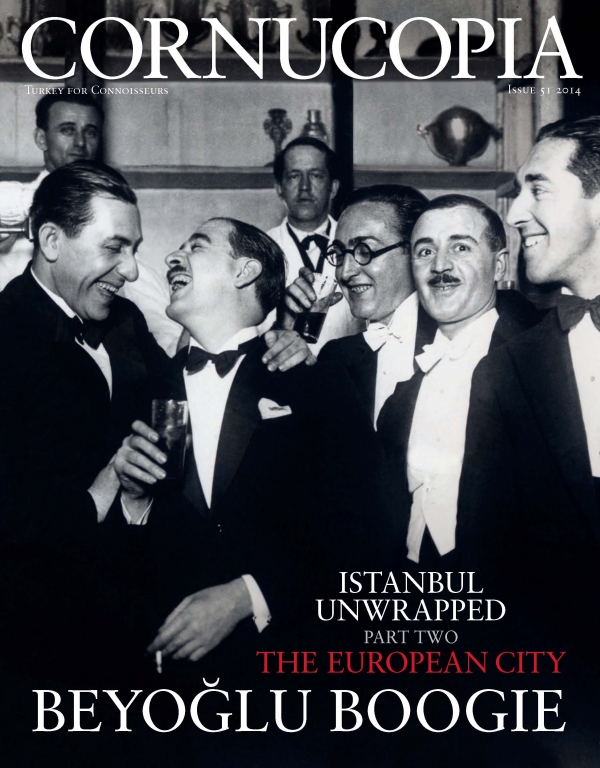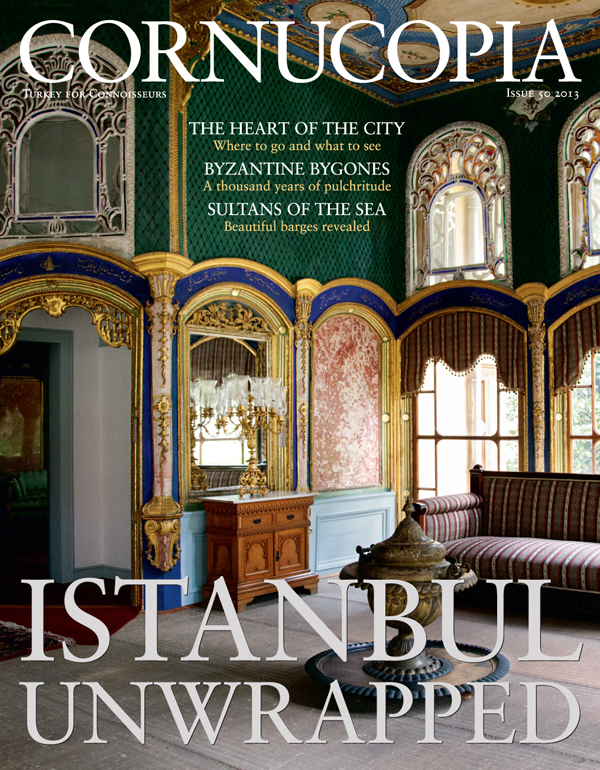Buy or gift a stand-alone digital subscription and get unlimited access to dozens of back issues for just £18.99 / $18.99 a year.
Please register at www.exacteditions.com/digital/cornucopia with your subscriber account number or contact subscriptions@cornucopia.net
Buy a digital subscription Go to the Digital EditionThe Kiliç Ali Pasha complex, completed in 1580 and newly restored, was the collaboration of two grand old men past their peak. Kılıç Ali Pasha, hero of Lepanto, was an admiral in his eighties. The imperial architect Sinan was in his nineties, but the result is a bold and beautiful venture. Photographs by Fritz von der Schulenburg
Mimar Sinan’s important 16th-century Kılıç Ali Pasha Mosque was commissioned by the Calabrian-born Giovanni Dionigi Galeni, who was captured by Barbary pirates on his way to Naples to study for the priesthood, became a galley slave and ended up in the service of the sultan, finally being made an Ottoman grand admiral and becoming Ali Pasha.
The mosque originally stood on the Bosphorus shoreline in full view of Topkapı Palace. The plan is a copy of Ayasofya’s, and it has the same calligraphic discs in the corners below the central dome. Kılıç Ali Pasha gained his epithet (kılıç means “sword”) by rescuing his squadron at the disastrous battle of Lepanto in 1571. He died a sprightly 90-year-old in the arms of a concubine (strictly against doctor’s orders). Like other Ottoman admirals, in winter he kept sailors employed building astonishing monuments. He oversaw the only surviving Sinan building in the Topkapı harem, Murad III’s domed bedchamber, which has tiles similar to those in the mosque.
Two unmagical restorations (one to repair damage done by the other) have hardly been helped by brash paintwork and baroque chairs, yet nothing can detract from the architectural wizardry. To see Sinan’s artistry stripped to bare essentials, step into the hamam next door.
 Issue 51, Summer 2014
Istanbul Unwrapped: The European City and the Sultan’s New City
Issue 51, Summer 2014
Istanbul Unwrapped: The European City and the Sultan’s New City
With 19th-century Istanbul in thrall to the music of Italy, an extraordinary theatre was born, the creation of one rather ‘odd character’. Emre Aracı tells a tale of comedy and tragedy
Black musicians, White Russian princesses, Turkish flappers… During the Jazz Age, Beyoğlu was a ferment of modernity and decadence. By Thomas Roueché
For 700 years, the European quarter was home to Genoese, Jews, Greeks and many others. Norman Stone charts the district’s changing fortunes
Maureen Freely recalls the artists and writers who enlivened her childhood with their flamboyant bravado and unspoken sadness
In the very thick of the city, with its fret and fuss, belching traffic and urban sprawl, lies a glade scented with linden blossoms. Here the young Sultan Abdülmecid built a jewel of a palace, grand but tiny, which is still a green oasis and place of escape. By Berrin Torolsan
Until the 20th century, visitors would sail serenely into Istanbul to disembark opposite the Topkapi. After this spectacular start, reality would set in. By David Barchard
With its hundreds of different shapes, pasta is today one of the most widely consumed and enjoyed of all the staples
For more than two centuries the Ottomans were obsessed by the elegance of the tulip and grew over 3,000 varieties, each characterised by almond-shaped petals drawn out into an exaggerated taper.
Across the Golden Horn from the Topkapı and the bazaars is the European City, where fortunes have for centuries been made and lost.
Patricia Daunt extols the palatial embassiess that adorn the heights of old Pera. Photographs by Brian McKee
As the old European quarters flourished in their seclusion, Sultan Abdülmecid had a dream – and expanded to the east
The Sakip Sabanci Museum has just celebrated 600 years of diplomatic relations between Poland and Turkey. Jason Goodwin finds deep-rooted affinities between the two countries
John Carswell introduces the mesmerising entries in this year’s Ancient and Modern Prize for original research



 Issue 51, Summer 2014
Istanbul Unwrapped: The European City and the Sultan’s New City
Issue 51, Summer 2014
Istanbul Unwrapped: The European City and the Sultan’s New City



Cornucopia works in partnership with the digital publishing platform Exact Editions to offer individual and institutional subscribers unlimited access to a searchable archive of fascinating back issues and every newly published issue. The digital edition of Cornucopia is available cross-platform on web, iOS and Android and offers a comprehensive search function, allowing the title’s cultural content to be delved into at the touch of a button.
Digital Subscription: £18.99 / $18.99 (1 year)
Subscribe now